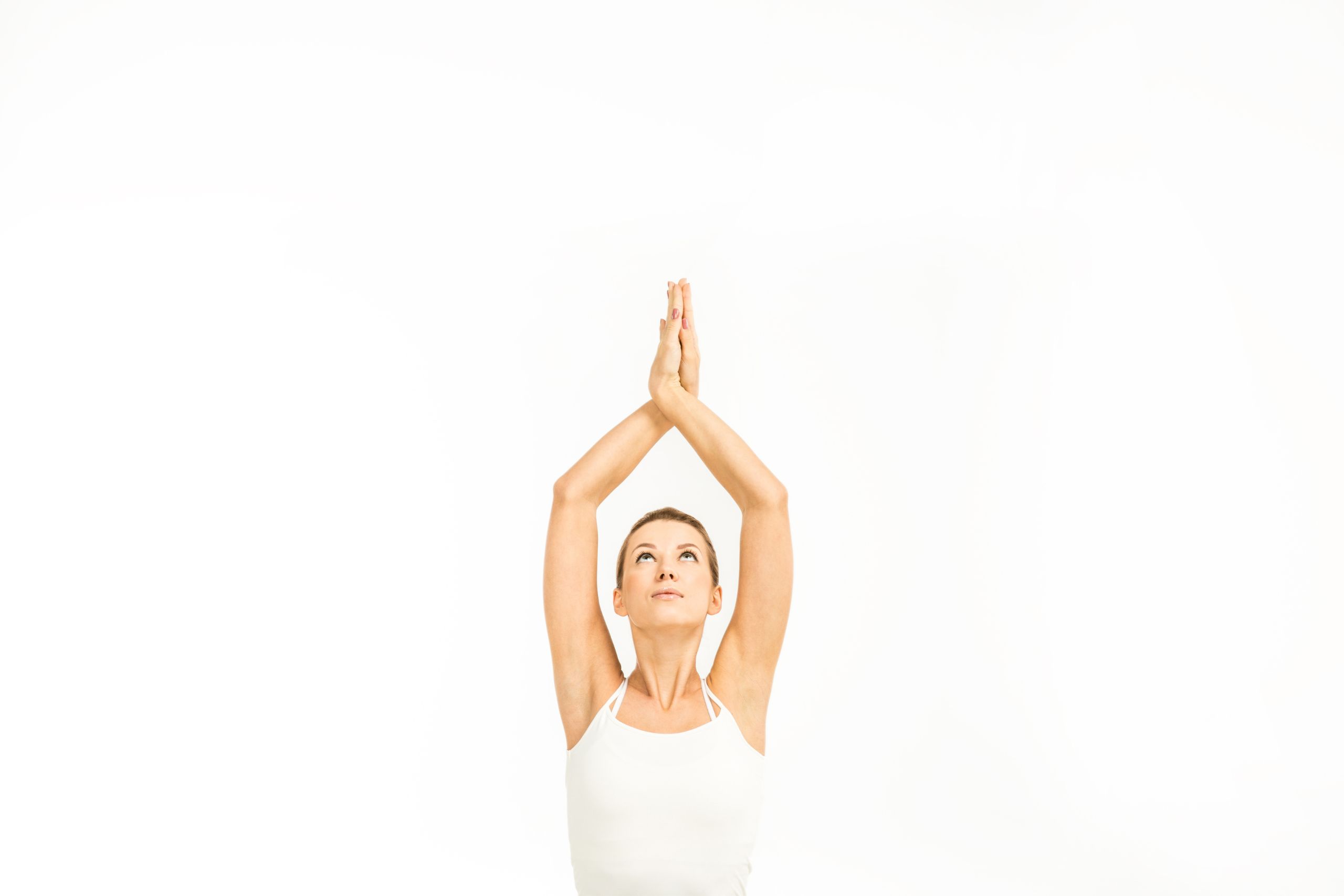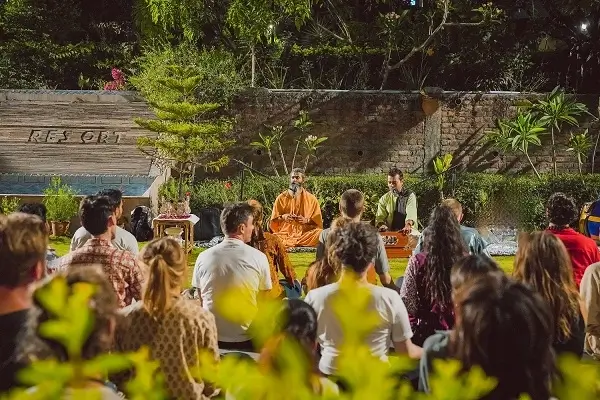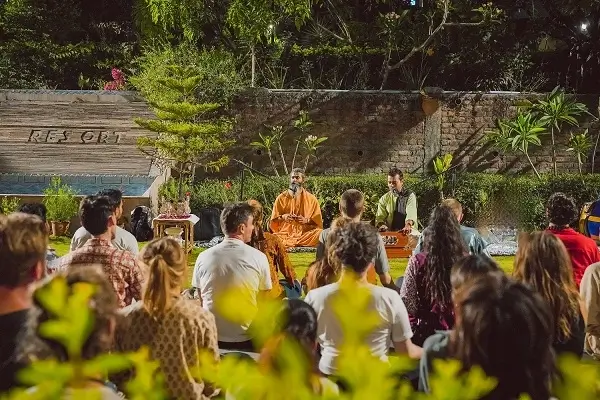Unlocking the Power of Kundalini Yoga: A Journey Within
Table of Contents
- 1. What is Kundalini yoga?
- 2. Benefits of Kundalini Yoga
- 2.1. Reduced Stress and Anxiety
- 2.2. Improved Cognition and Mood
- 2.3. Healthier Blood Sugar Levels
- 2.4. Better Flexibility
- 3. What to Expect in Your First Kundalini Yoga Class
- 3.1. Key Kundalini Mantras
- 3.2. Kriyas
- 3.3. Pranayama
- 3.4. Everyone Wearing White
- 3.5. Meditation
- 4. Is Kundalini Yoga Dangerous?
Kundalini yoga is the rigorous practice of physical asanas, breathing, meditation, and chanting. This ancient yogic practice allows you to be aware of your chakras and awaken the sleeping energy based on the spine. As kundalini energy is dormant at the base of the spine it flows through the chakras allowing you to come in contact with your inner self after awakening it.
This blog will allow you to understand what kundalini yoga is, its benefits, is it dangerous to practice kundalini yoga. Here are some fundamentals of Kundalini yoga that you must learn before starting your practice.
What is Kundalini yoga?
Kundalini yoga despite being performed throughout the work, the origin of the practice is unknown. The Vedic texts and yogic scriptures highlight that the kundalini energy lies asleep and dormant at the base of one’s spine much like a coiled respect. Thus, to activate this energy allow it to flow through the spine chakras and gradually throughout your body. Wondering what are the seven chakras of your body? The chakras or the seven centers of your body are:
-
Root Chakra
-
Crown Chakra
-
Third eye chakra
-
Throat chakra
-
Heart Chakra
-
Naval, or solar plexus chakra
-
Sacral Chakra
Kundalini is different from every form of yoga and is often deemed dark in its spirits primarily due to its nature of control and balance. One requires consistent practice to find the kundalini awakening.
Benefits of Kundalini Yoga
Kundalini yoga has multiple benefits available for all age groups here some advantages target the yogi's physical attributes and other cognitive. The most common among those are:
Reduced Stress and Anxiety
In one study, pupils from elementary and intermediate schools experienced "significantly improved" levels of resilience and stress reduction following ten weeks of Kundalini yoga. Analogous findings have been observed for adult stress levels.
This type of yoga may also be beneficial for those suffering from post-traumatic stress disorder (PTSD), according to an additional study. Research has linked Kundalini Yoga to reduced anxiety in individuals suffering from a generalized anxiety disorder.
Improved Cognition and Mood
A long-term Kundalini Yoga practice helps address age-related cognitive impairment (both memory and executive performance), which is frequent as we age. It accomplishes this in the short- and long-term.
Additionally, this study discovered that Kundalini Yoga improves mood. Participants in this yoga technique reported increased resilience and changes in their emotions of apathy and sadness.
Healthier Blood Sugar Levels
About 10% of Americans have diabetes, with type 2 diabetes accounting for the bulk of cases. Your body does not respond to insulin as it should if you have type 2 diabetes. It produces more as a result, raising your blood sugar levels.
According to research, Kundalini Yoga may be able to lower these blood sugar levels, in part by lowering the hormones that cause blood glucose releases to rise. Additionally, it aids in weight loss, which is advantageous for those who have type 2 diabetes because obesity exacerbates the condition.
Better Flexibility
Kundalini Yoga may be helpful if you wish to increase your flexibility. In fact, a 200-hour Kundalini Yoga training session done over this course will allow you to "significantly improve" the participants' flexibility, according to one study involving 60 college women.
Since more flexibility stretches the muscles and ligaments, it may help lessen back pain. Yoga's capacity to improve circulation, which enables the body to deliver nutrients and oxygen to the injured area to promote healing, enhances this.
What to Expect in Your First Kundalini Yoga Class
After we get the idea of what kundalini is and before we get into how to practice kundalini yoga it is extremely important to learn the fundamentals of what to anticipate from your first kundalini class.
Key Kundalini Mantras
Like every yogic practice, kundalini also functions on mantras. A mantra acts as a sound vibration that allows you to calm your consciousness and maintain brain chemistry. The only difference between Kundalini mantras and other yogic mantras is that the former find their verses from Gurumukhi and others from Sanskrit. In most Kundalini sessions, you will see yogis chanting Ong Namo Guru Dev Namo, and Sat Nam. Let's learn the meaning and significance of these mul mantras.
Ong Namo Guru Dev Namo
Above all the mantras, kundalini yoga follows the Ong Namo Guru Dev Namo when roughly translated means "I bow to the Creative Wisdom and to the teacher within," which should be chanted thrice at the beginning of each kundalini class. It indicates that you must connect with the "Golden Chain" of teachers and tune into yourself as a result.
Sat Nam
The Bija mantra of kundalini yoga is Satnam which means to pay respect to who I am. The mantra allows you to be authentic and live as per your destiny which aims to awaken the soul and is the main objective of Kundalini yoga. Did you know there is an ideal way to chant the mantra? During class, the mantra is chanted with the breath where inhaling a mental "Sat" and exhaling a mental "Nam" accomplishes this.
Kriyas
Practising a Kundalini kriya according to the Vedic scriptures is extremely important to get the desired mental and physical transformation. To explain kriya in layman's language means completed action where each kriya is intended for a particular use. To help you understand better the prime example is surya kriya aims to awaken the sun's energy. Surya kriya allows you to have a clear conscience, a strong digestion, a linear body and overall a grounded nature of activity. This particular kriya works on seven distinct physical postures and movements, where each practice accompanies energetic lock and breathing control.
Pranayama
Similar to every yogic practice, kundalini yoga has breathing awareness as its fundamental core. Here each kundalini kriya helps you incorporate and discover different breathing patterns that you might not have used before.
Everyone Wearing White
Every aspect of kundalini yoga might change but one thing that we can attest to is a yoga teacher wearing a turban and clothes in white. The significance of this can be well explained by the quote "Everything has a foot and a half aura; this is a basic scientific truth that explains why we wear white. Each animal has an aura measuring three and a half feet. All people possess a nine-foot aura. Additionally, color therapy adds one extra foot to our aura if we wear white and cotton.
Our body is ringed by an invisible energy or aura which acts as a container of energy and thus maintaining its strength is important to shield your body and mind from external noise. It allows you to amplify the energies centered on the kriya practice. When you kill the noise you find the purity you require and thus, the color white. So, don’t let the white outfit deter you from practicing this yoga.
Meditation
Meditation is the sum-up of every kriya practice. One can practice meditation as an integration act or come after meditation to match the kriya. You might practice the kriya with a neutral mind but meditation allows you to keep that neutral mind which is centered on the benefits. Kundalini meditation may or may not have an asana routine or mudra but it impacts the entire body and mind circuit.
Is Kundalini Yoga Dangerous?
Though it's hard to say for sure, if you're not prepared, Kundalini yoga seems to have the potential to trigger negative mental experiences. Like any yoga practice, it's ideal to be physically well and to be aware of any limits before beginning, such as joint pain or breathing issues. If you're not sure if you should do Kundalini or any other type of yoga, you should speak with your doctor or a practicing yogi.
When starting a Kundalini exercise, one should be especially mindful of the "Kundalini awakening" as it is an energetic activation and chakra activation. This could occur naturally or as a result of consistent practice. Thus, even while practicing Kundalini yoga isn't always "dangerous," it's advisable to have a trained instructor and avoid pushing for an awakening. If you are looking to experience kundalini yoga or refine your experience visit Heart of Yoga Institute in India and experience this holy training. We run three different YTT courses of 200, 300, and 500-hour yoga teacher training in Rishikesh if you are interested in the same visit the website and learn it all under the guidance of the pioneers in kundalini yogic practice.












